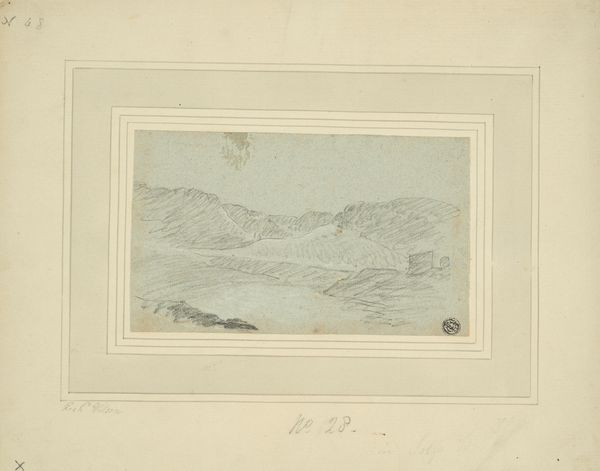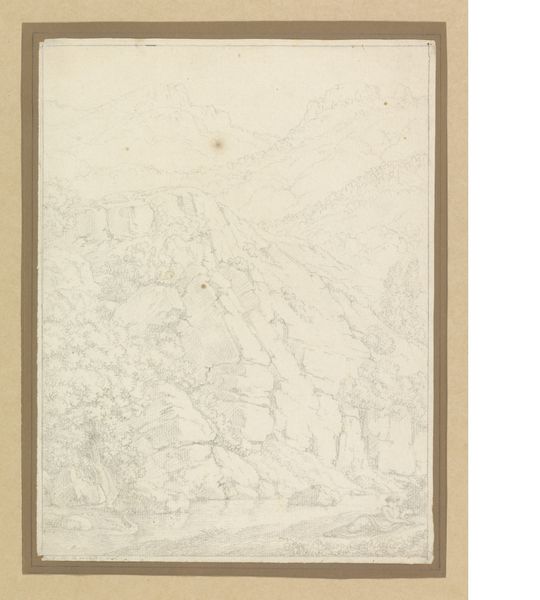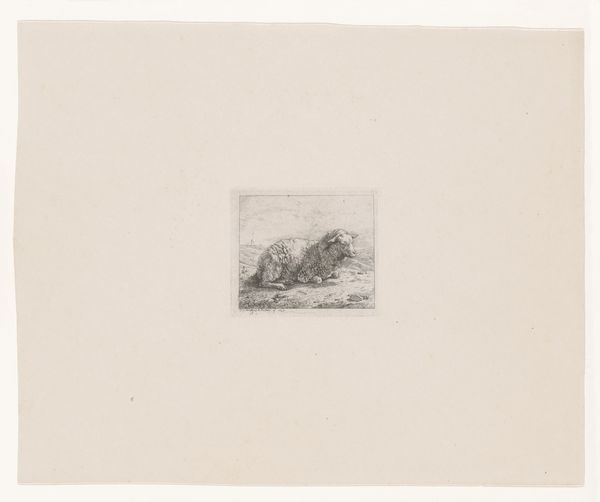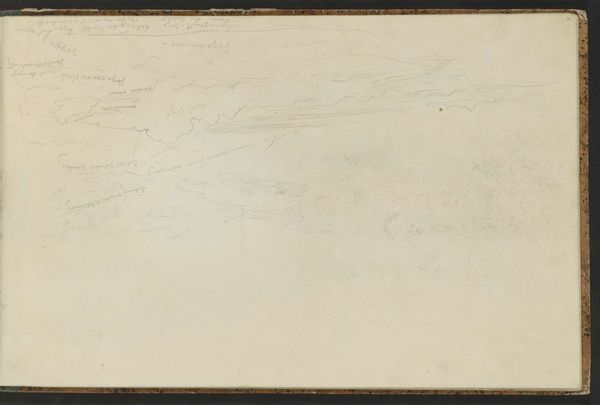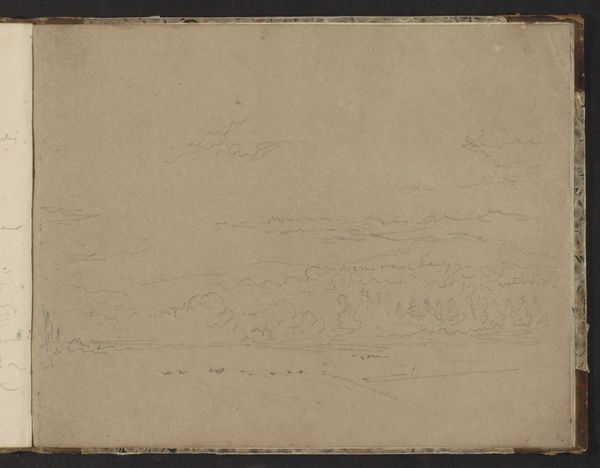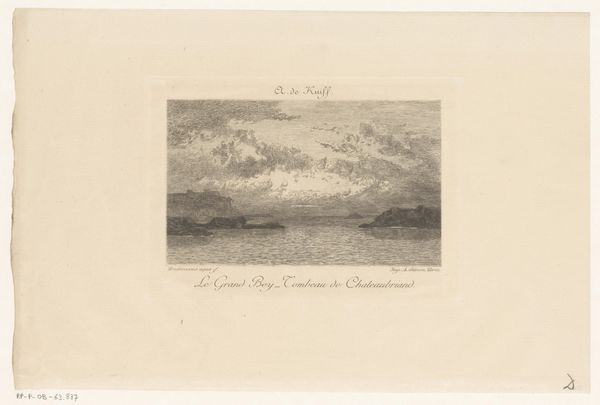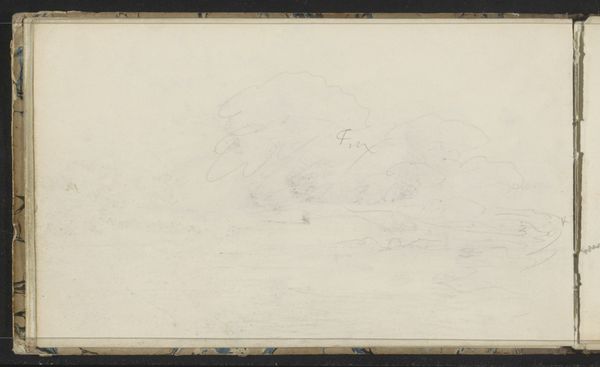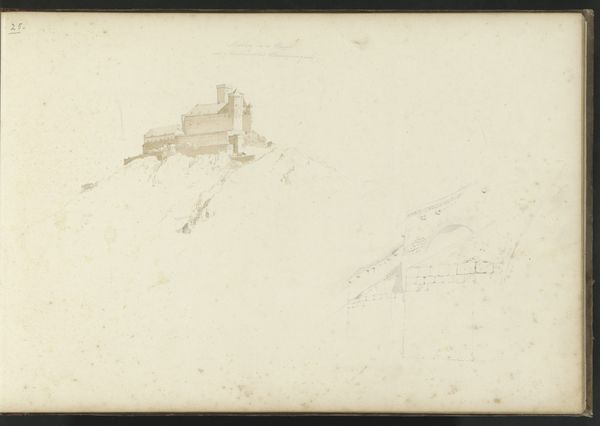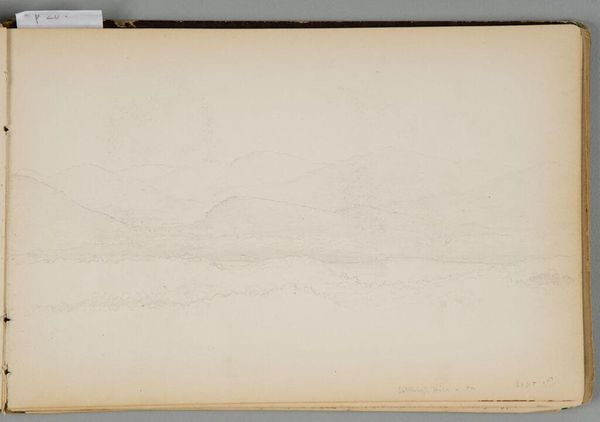
drawing, print, paper, charcoal
#
drawing
# print
#
landscape
#
classical-realism
#
paper
#
form
#
geometric
#
line
#
charcoal
Dimensions: 134 × 202 mm
Copyright: Public Domain
Curator: Here we have Richard Wilson's "Ruins in a Mountainous Country," an undated work residing here at the Art Institute of Chicago. It seems to be a charcoal drawing or perhaps a print, on paper. Editor: It has a rather somber feel. The soft grey charcoal and the bare composition really underscore a sense of desolation, even serenity in its stillness. Curator: The romantic obsession with ruins was widespread, speaking to the impermanence of human endeavor and a reflection on past civilizations. These images, and the picturesque aesthetic that fueled them, helped define British identity in relation to the classical world. Editor: Absolutely. The simple linear quality in rendering the mountains and crumbling structure creates depth and geometric variation within a monochrome palette. Curator: Wilson was central in developing British landscape painting as a worthy subject. By associating British sites with the grandeur of classical ruins and infusing them with the associated historical weight, it elevated their cultural status, subtly nodding to the burgeoning British empire. The drawing provided viewers with a vicarious experience of these places, fueling national pride. Editor: I’m struck by the rhythmic repetition of lines—it’s as though Wilson discovered a pattern in nature, a universal set of lines to express a variety of forms within space. A very classical theme treated in an interesting way. Curator: Considering the time, prints like this were reproduced and circulated widely, embedding this particular aesthetic vision within British society, contributing to national identity through a shared visual language. The image works not only on an individual level but a social one. Editor: I agree. Ultimately, this image works so well by exploring subtle modulations of tonal range within such constrained geometric forms and a limited number of lines. A testament to less is more! Curator: It's remarkable to consider how seemingly simple landscape drawings once carried such weighty cultural implications. They shaped perceptions, national identities, and a sense of belonging within a quickly modernizing society. Editor: Indeed. Even without that historical context, it remains a striking, well-balanced exercise in spatial arrangement. It allows us to experience that sublimity firsthand!
Comments
No comments
Be the first to comment and join the conversation on the ultimate creative platform.
